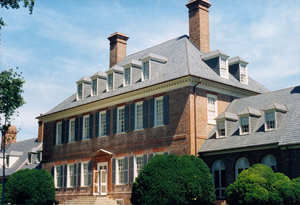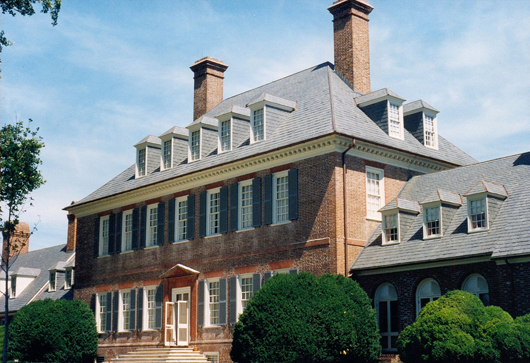
WILLIAMSBURG, Va. (AP) – A lovingly preserved vestige of Virginia’s plantation past is up for sale, offering a centuries-old brick-and-mortar link to the first European settlers.
Carter’s Grove will be listed at $14.9 million at an auction scheduled for Wednesday. The dot-com entrepreneur who purchased it lost his fortune and fell deeply into debt. It’s being sold by order of the U.S. Bankruptcy Court.
The property includes an 18,700-square-foot mansion that is listed as a National Historic Landmark, a caretaker’s house, stables and 400 grassy acres that slope to more than a mile of frontage on the James River.
The plantation house is considered among the finest examples of Georgian architecture in Virginia and among the best in the U.S. It features dazzling brick and fine wood flourishes by Old World craftsmen that have survived more than 250 years since after its construction.
“The symmetry of the structure, the balance, the architectural details of the building elevates it to a higher status,” said Matt Webster, director of architectural preservation at the Colonial Williamsburg Foundation. “Very rarely, if at all, do you find a plantation with its holdings.”
Then there’s the history.
The perch above the James where the plantation rises like a wedding cake has been occupied by Native Americans dating back to 6,500 B.C. Ten years after Europeans established Jamestown – five miles upriver – settlers carved out Wolstenholme Towne on a bluff overlooking the river where the plantation came to be located. The settlers eventually were wiped out by Indians.
By the early 18th Century, the land was among the 300,000 acres owned in Virginia by the wealthy Robert “King” Carter. He died in 1732, leaving the property to his daughter, Elizabeth. Her son, Carter Burwell, had the mansion built.
Work on the main plantation house began in 1750 and was completed five years later, with help from some leading craftsman of the era. Scholars considered the exterior brickwork among the finest in the United States.
Visitors are greeted by a grand staircase and bannisters carved out of black walnut. The landings are completed in an intricate parquet design, the work of a joiner brought over to the New World from England.
Notches along the rail have long been part of the mansion’s lore. It has been said that they were purportedly made by a British general hacking at the rail with his sword as he rode his horse up the stairs to stir troops who had occupied the second floor.
Webster scoffs at the claim. The origin of the notches is not known.
George Washington and Thomas Jefferson were among the famous visitors to the plantation.
Carter’s Grove, of course, was the exception in its day. Only the ultra-rich – the 1 percenters of the Colonial period – lived amid such luxury.
Calder Loth, senior architectural historian with the Virginia Department of Historic Resources, said Carter’s Grove represents a “conspicuous example of conspicuous consumption.”
“The majority of people were living in essentially shacks or the most humble kind of abodes, many of which were not meant to be permanent structures,” Loth said. He worked with Colonial Williamsburg to secure state easements on the property to ensure it would never be subdivided and that the historic integrity of plantation house would be maintained.
Today, few plantations of Carter’s Grove stature remain in Virginia. Some were lost in the Civil War or to fire, while others have simply fallen into disrepair or have been bulldozed for subdivisions.
Carter’s Grove was a gift to Colonial Williamsburg from the Rockefeller Foundation in 1969 and was open to tourists until 2003.
The mansion fell on hard times in 2007 after Halsey Minor, who made his fortune in technology, purchased the property from Colonial Williamsburg. His dream was live part-time there and to create a thoroughbred farm.
But Minor never lived at Carter’s Grove and the site fell into disrepair from neglect. More than $600,000 in repairs restored the landmark for sale.
“We have had inquiries from some foundations, some institutions, but mostly from well-to-do individuals who see the property as a unique piece of American history,” said Stanley J. Samorajczyk, the trustee overseeing the sale. “It can’t be replicated.”
Proceeds of the sale will pay off creditors, among other expenses.
Loth said he was disappointed that Minor’s financial collapse left Carter’s Grove wanting for repairs.
“I just hope the next owner is very carefully vetted,” he said.
___
Steve Szkotak can be reached on Twitter at http://twitter.com/sszkotakap .
___
Online:
Colonial Williamsburg: http://www.colonialwilliamsburg.com
Copyright 2014 Associated Press All rights reserved. This material may not be published, broadcast, rewritten or redistributed.
AP-WF-05-18-14 1301GMT
ADDITIONAL IMAGE OF NOTE



